Greta Suiter, Manuscripts Archivist
Introduction
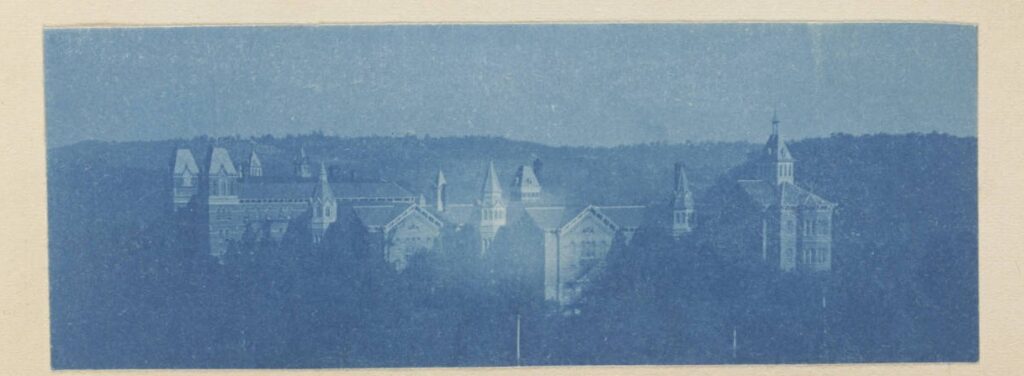
As part of an ongoing collaboration between the Archives and Special Collections and the VICO 4112/5112 Illustration Capstone class, student created infographic posters are currently exhibited alongside archival materials on the fifth floor of Alden Library.
In spring of 2025 students from Illustration Capstone: Advanced Informational Graphics created infographic posters about the history of the Asylum (today the buildings and area is known as The Ridges) based on selected themes such as: male patients, female patients, annual reports, the nursing program and nurse staff, cemeteries, and the architecture and grounds. The posters provide a creative interpretative lens through which to view the history of the Asylum.
Early Patients
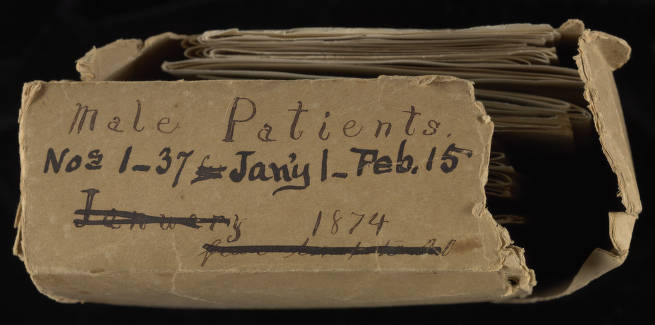
With the creation of legislation in 1867, an asylum was established in southeastern Ohio. By the end of the 19th century there were five regional asylums in Ohio, with each asylum accepting patients from their state-mandated district.
In January of 1874 the first patients were admitted to the Athens Lunatic Asylum which was built with room for 572 patients. The rooms quickly overfilled. Patients came from all walks of life and could range in age from teenagers to people in their nineties. Patient illnesses were diverse and included many that would not be considered mental illnesses today. Common illnesses included post-traumatic stress disorder, menopause, postpartum depression, drug and alcohol addiction, tuberculosis, epilepsy, dementia, self-abuse, schizophrenia, depression and bipolar disorder.
Information about patients can be found in the “Inquest of Lunacy” intake packets from the Athens Mental Health Center archival collection. For the years 1874 to 1911 there are packets divided by gender. Most packets consist of three documents: the findings of the Inquest of Lunacy, a medical certificate filled out by a “respected physician of the county,” and an application for admission. Additional correspondence was sometimes included with these document packets, which accompanied the persons judged insane to the hospital. The posters below feature information about patients during the first ten years the Asylum was open.
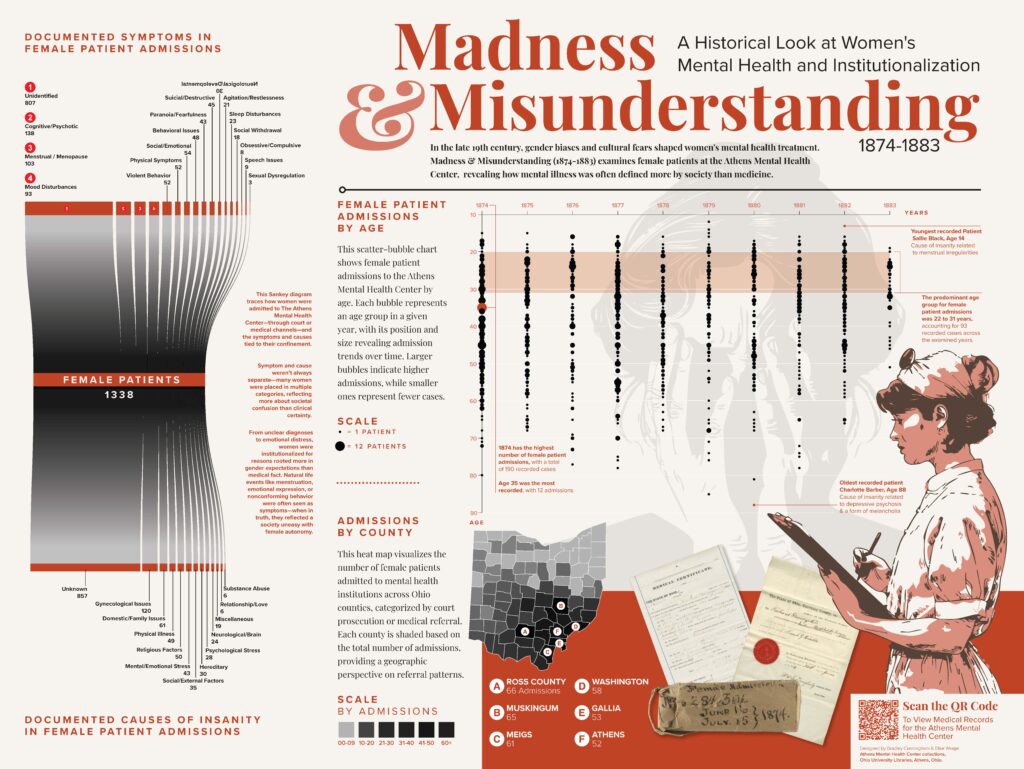
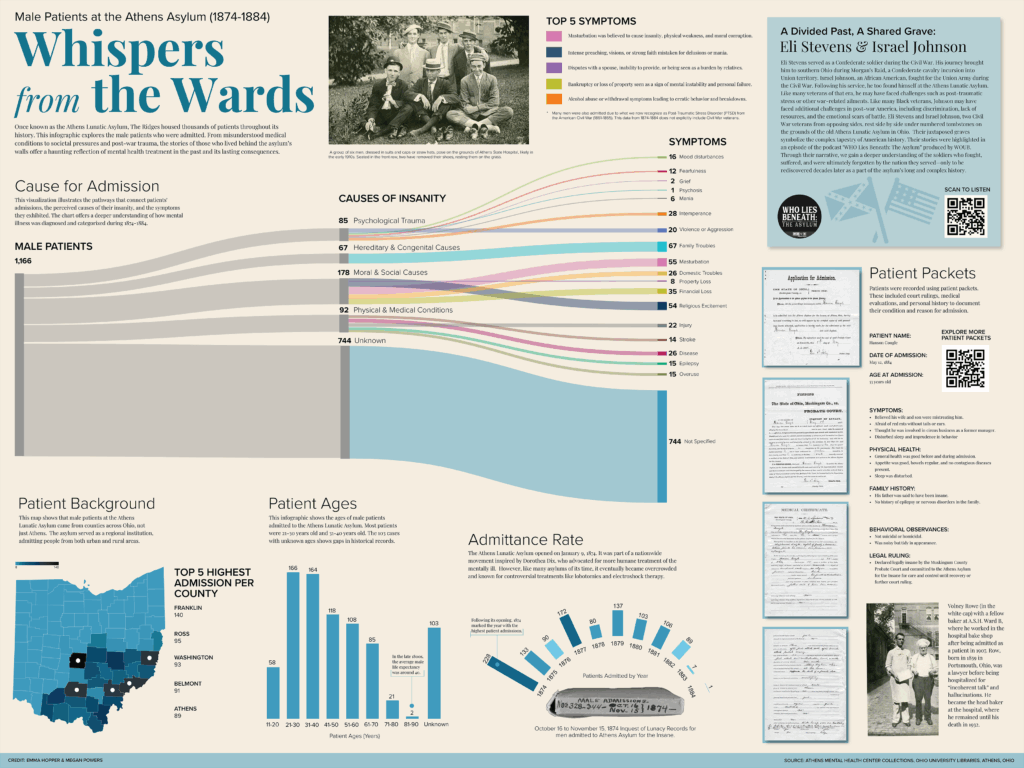
Architecture and the Kirkbride Plan
The facility was designed according to the Kirkbride Plan, described as a gold standard for Victorian-era mental hospitals. Dr. Thomas Kirkbride, who sought moral treatment for those afflicted with mental illness, developed the plan for a restful facility that would cure patients, aided by the architecture of the building and it’s park-like surroundings. Kirkbride Plan buildings are known for their spacious corridors and high ceilings for ventilation, and large windows to let in light. Residents of Kirkbride asylums and community members were encouraged to use the grounds, and interact with each other.
The poster, “A Legacy of Care & Architecture” investigates the architects behind the building and landscape design, the “bat-wing” Kirkbride Plan which determined the shape of the main building, and a timeline of how the grounds and buildings changed over time.
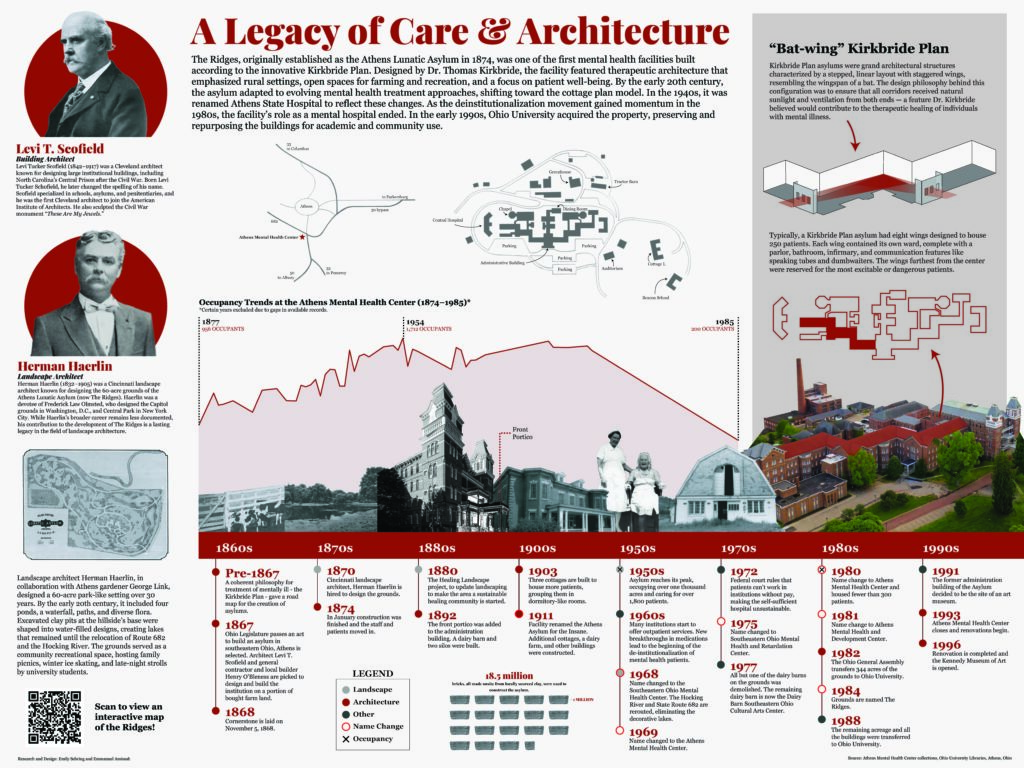
The asylum continued to expand with construction of new buildings and addition of acreage. Produce from the dairy, gardens, poultry, cattle, piggery and the orchards helped to support and feed the institution. Many patients provided free labor making the Asylum almost self-sustaining. Working outside was seen as therapy through exercise and fresh air. Patients worked on the farm until 1972, when the practice of patient labor became illegal.
Mental Health Treatment
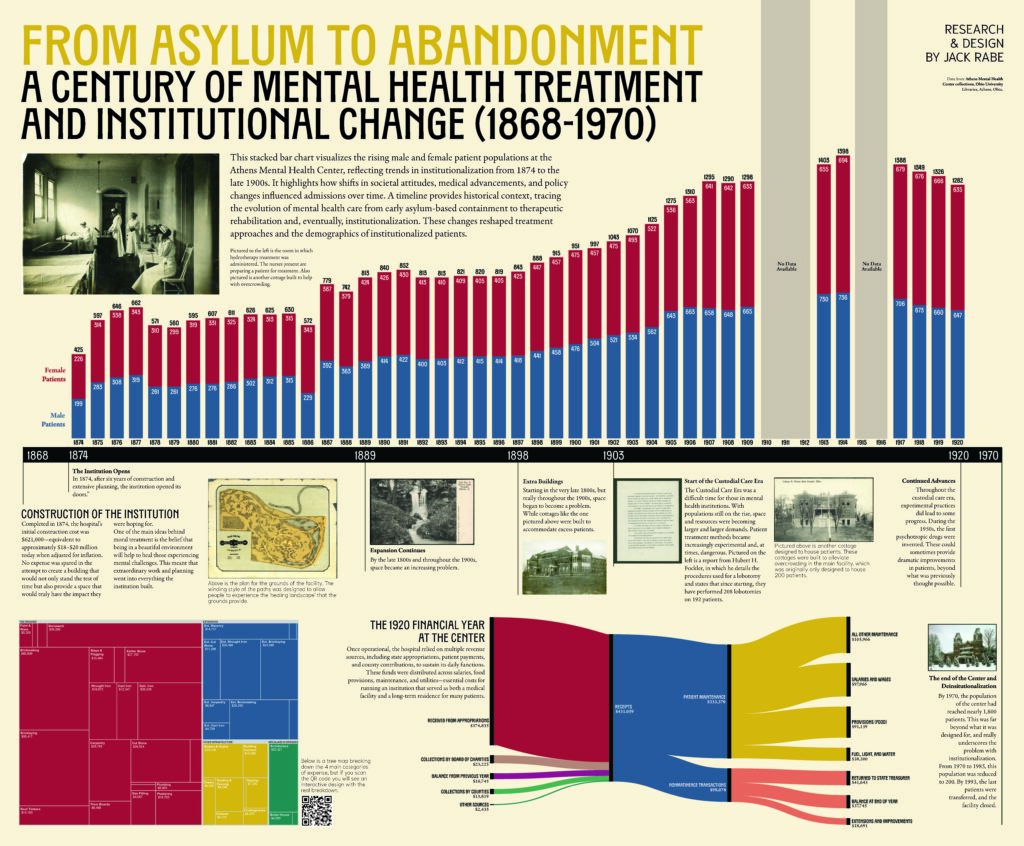
When treatments of amusement, relaxation or physical labor failed to cure, physicians administered other treatments such as hydrotherapy, a common practice at the end of the nineteenth century and into the 20th century. The 1940s popularized electroconvulsive therapy (ECT), and the 1950s brought the infamous lobotomies. The population of patients peaked in the 1950s and 1960s, and alternatively declined throughout the 1970s and 1980s when the idea of deinstitutionalization developed and new, effective treatments, such as antipsychotic drugs. This allowed many patients to live independently without the need to be confined to a mental health center.
Utilizing annual reports from the Athens Mental Health Center records, Jack Rabe created the above poster reflecting the changes in treatment and patient care over the course of the Asylum’s history.
Nurses and Staff
For many years the Asylum was the primary employer in Athens. The photograph collections of Netta Mapes and Nell Roseboom from the Southeast Ohio History Center provide us with images of some of the employees and visitors to the Asylum’s grounds. The poster “Caretakers of Athens” highlights Roseboom and Mapes’s education and careers at the Asylum as well as information about the nurses and staff through the 20th century.

After years of decay of the facilities and reduced numbers of patients, the Mental Health Center moved across the river in the early 1990s, leaving behind the looming Victorian buildings. Today, the buildings and grounds of the old Asylum are owned and used by Ohio University. The Ohio University Kennedy Museum of Art opened in 1996 and several other buildings have been repurposed since.
Cemeteries
The grounds are being restored, including the Asylum’s three cemeteries. Over 1,900 deceased patients who were unclaimed by their families were buried at the asylum with headstones marked only by numbers. In recent years individuals and organizations such as the National Alliance on Mental Illness (NAMI) have donated many hours to repair the cemeteries by clearing brush and mending hundreds of markers that were displaced or broken, and placing names and dates on new markers at graves previously only designated by numbers. The poster, “Buried History: The Cemeteries of The Athens Mental Health Center” depict the cemeteries and the people laid to rest in them. Through color coding we can see where men and women were segregated by gender, and the timeline at the bottom of the poster gives some of the causes of death.
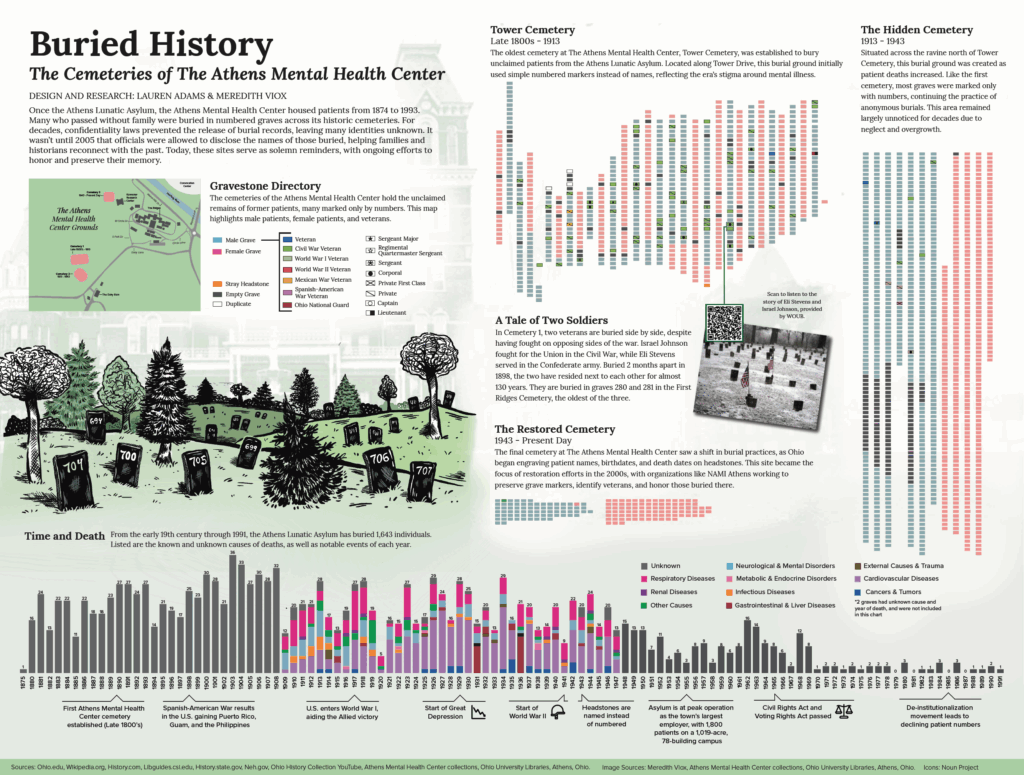
Visiting the Exhibition and Collection
The Mahn Center for Archives and Special Collections is open M-F 9am-12pm and 1pm-4pm. One can make an appointment to view the Athens Mental Health Center records during those times. There is also the digital collection, and there is a Libguide about the collections at Ohio University and more broadly.
The physical exhibition is on display outside the Archives and Special Collections on the fifth floor of Alden Library through the end of the fall semester.